Benjamin Kaufmann
Multi-shot ASP solving with clingo
Mar 20, 2018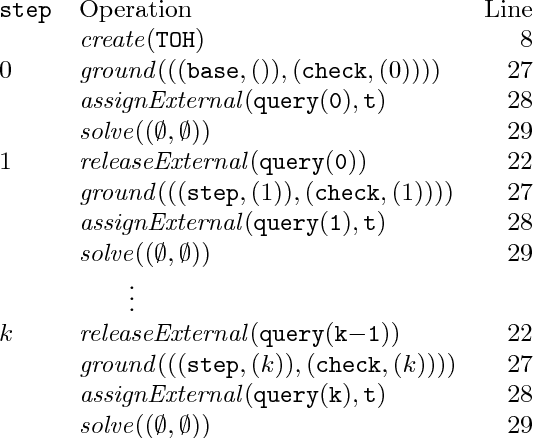

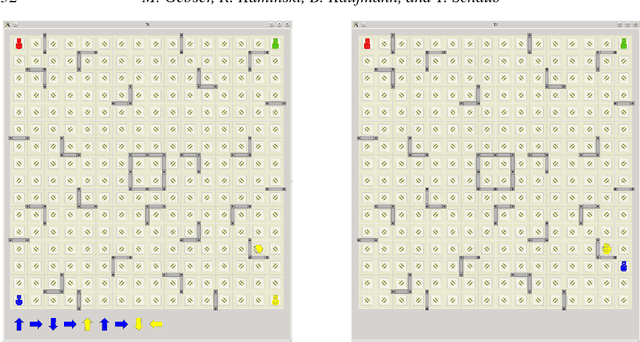
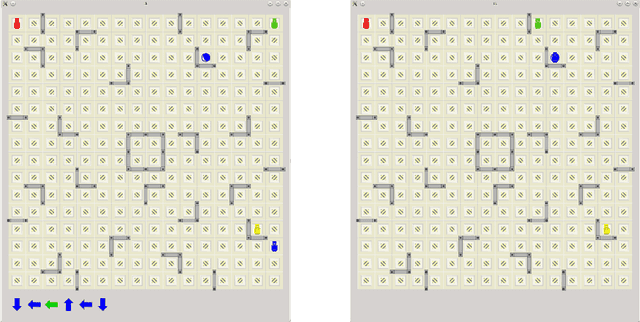
Abstract:We introduce a new flexible paradigm of grounding and solving in Answer Set Programming (ASP), which we refer to as multi-shot ASP solving, and present its implementation in the ASP system clingo. Multi-shot ASP solving features grounding and solving processes that deal with continuously changing logic programs. In doing so, they remain operative and accommodate changes in a seamless way. For instance, such processes allow for advanced forms of search, as in optimization or theory solving, or interaction with an environment, as in robotics or query-answering. Common to them is that the problem specification evolves during the reasoning process, either because data or constraints are added, deleted, or replaced. This evolutionary aspect adds another dimension to ASP since it brings about state changing operations. We address this issue by providing an operational semantics that characterizes grounding and solving processes in multi-shot ASP solving. This characterization provides a semantic account of grounder and solver states along with the operations manipulating them. The operative nature of multi-shot solving avoids redundancies in relaunching grounder and solver programs and benefits from the solver's learning capacities. clingo accomplishes this by complementing ASP's declarative input language with control capacities. On the declarative side, a new directive allows for structuring logic programs into named and parameterizable subprograms. The grounding and integration of these subprograms into the solving process is completely modular and fully controllable from the procedural side. To this end, clingo offers a new application programming interface that is conveniently accessible via scripting languages.
Clingcon: The Next Generation
May 12, 2017
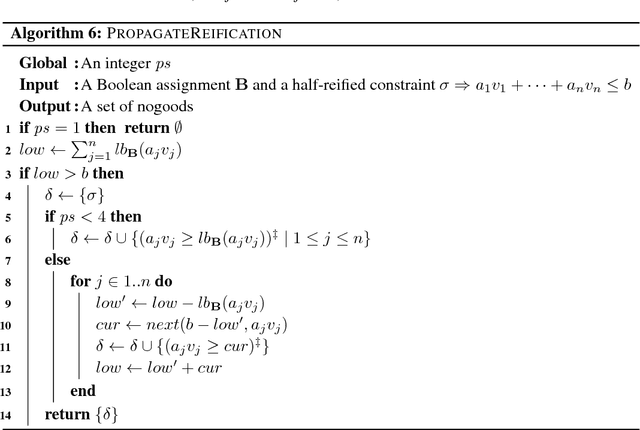

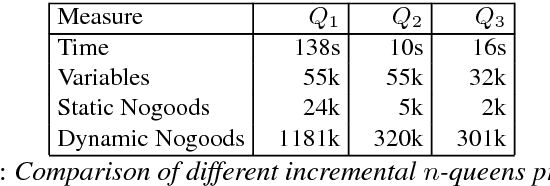
Abstract:We present the third generation of the constraint answer set system clingcon, combining Answer Set Programming (ASP) with finite domain constraint processing (CP). While its predecessors rely on a black-box approach to hybrid solving by integrating the CP solver gecode, the new clingcon system pursues a lazy approach using dedicated constraint propagators to extend propagation in the underlying ASP solver clasp. No extension is needed for parsing and grounding clingcon's hybrid modeling language since both can be accommodated by the new generic theory handling capabilities of the ASP grounder gringo. As a whole, clingcon 3 is thus an extension of the ASP system clingo 5, which itself relies on the grounder gringo and the solver clasp. The new approach of clingcon offers a seamless integration of CP propagation into ASP solving that benefits from the whole spectrum of clasp's reasoning modes, including for instance multi-shot solving and advanced optimization techniques. This is accomplished by a lazy approach that unfolds the representation of constraints and adds it to that of the logic program only when needed. Although the unfolding is usually dictated by the constraint propagators during solving, it can already be partially (or even totally) done during preprocessing. Moreover, clingcon's constraint preprocessing and propagation incorporate several well established CP techniques that greatly improve its performance. We demonstrate this via an extensive empirical evaluation contrasting, first, the various techniques in the context of CSP solving and, second, the new clingcon system with other hybrid ASP systems. Under consideration in Theory and Practice of Logic Programming (TPLP)
Multi-threaded ASP Solving with clasp
Oct 11, 2012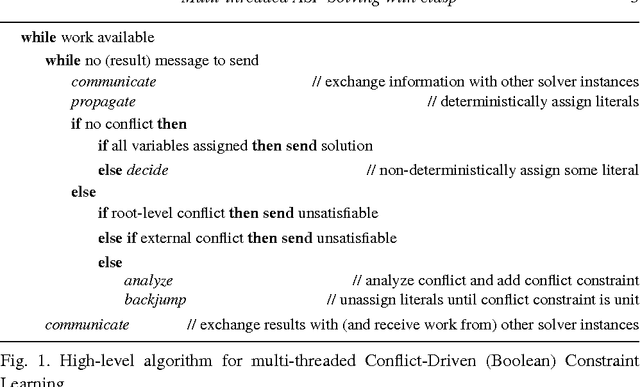
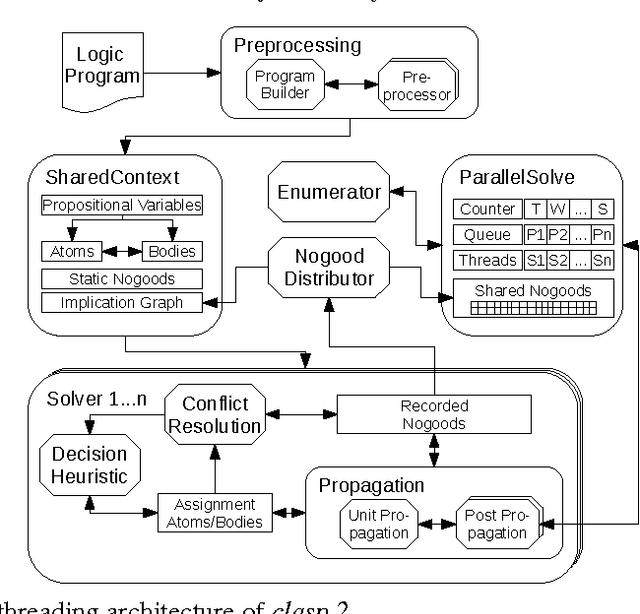
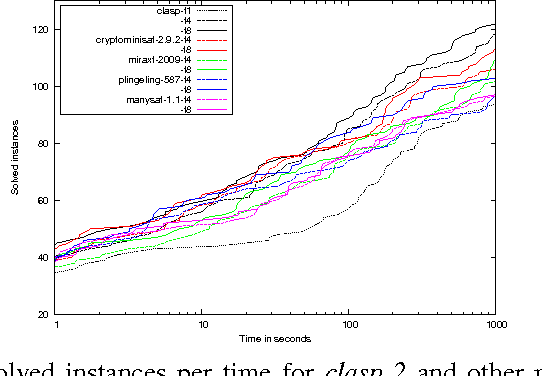
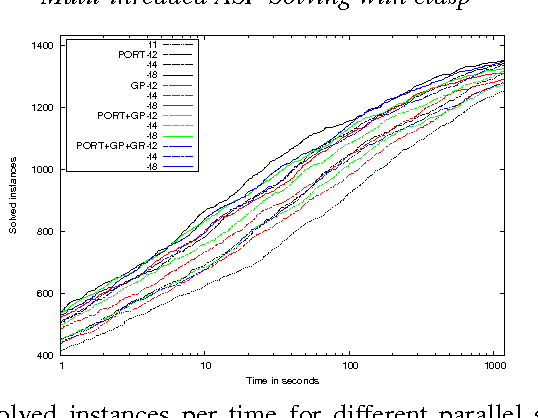
Abstract:We present the new multi-threaded version of the state-of-the-art answer set solver clasp. We detail its component and communication architecture and illustrate how they support the principal functionalities of clasp. Also, we provide some insights into the data representation used for different constraint types handled by clasp. All this is accompanied by an extensive experimental analysis of the major features related to multi-threading in clasp.
Heuristics in Conflict Resolution
May 11, 2010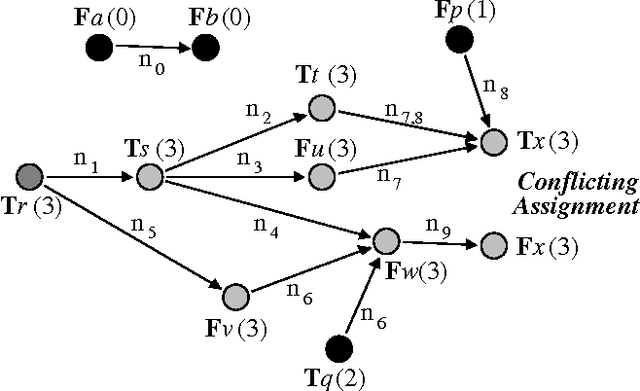
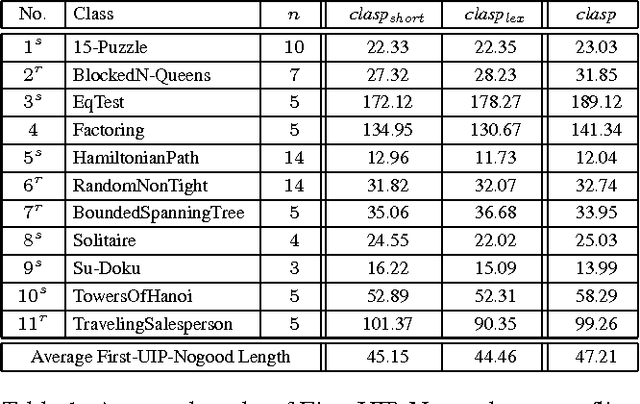
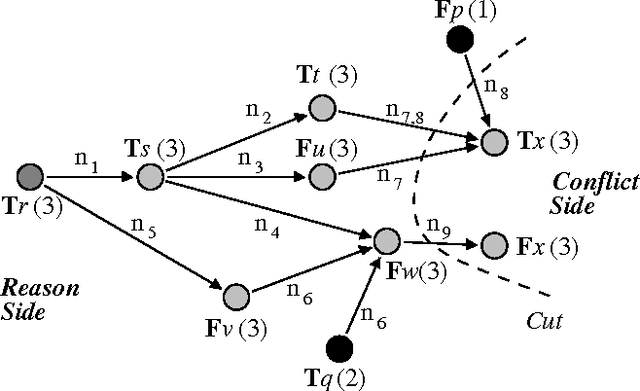
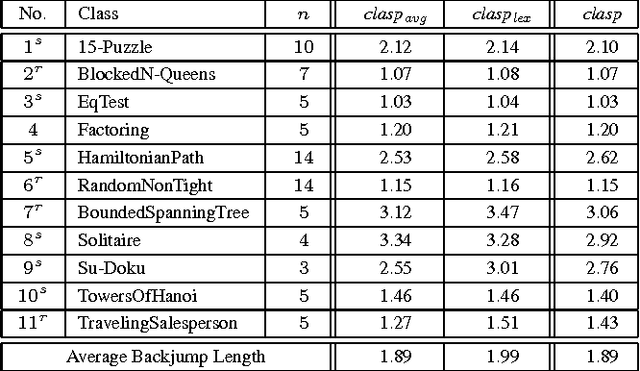
Abstract:Modern solvers for Boolean Satisfiability (SAT) and Answer Set Programming (ASP) are based on sophisticated Boolean constraint solving techniques. In both areas, conflict-driven learning and related techniques constitute key features whose application is enabled by conflict analysis. Although various conflict analysis schemes have been proposed, implemented, and studied both theoretically and practically in the SAT area, the heuristic aspects involved in conflict analysis have not yet received much attention. Assuming a fixed conflict analysis scheme, we address the open question of how to identify "good'' reasons for conflicts, and we investigate several heuristics for conflict analysis in ASP solving. To our knowledge, a systematic study like ours has not yet been performed in the SAT area, thus, it might be beneficial for both the field of ASP as well as the one of SAT solving.
 Add to Chrome
Add to Chrome Add to Firefox
Add to Firefox Add to Edge
Add to Edge